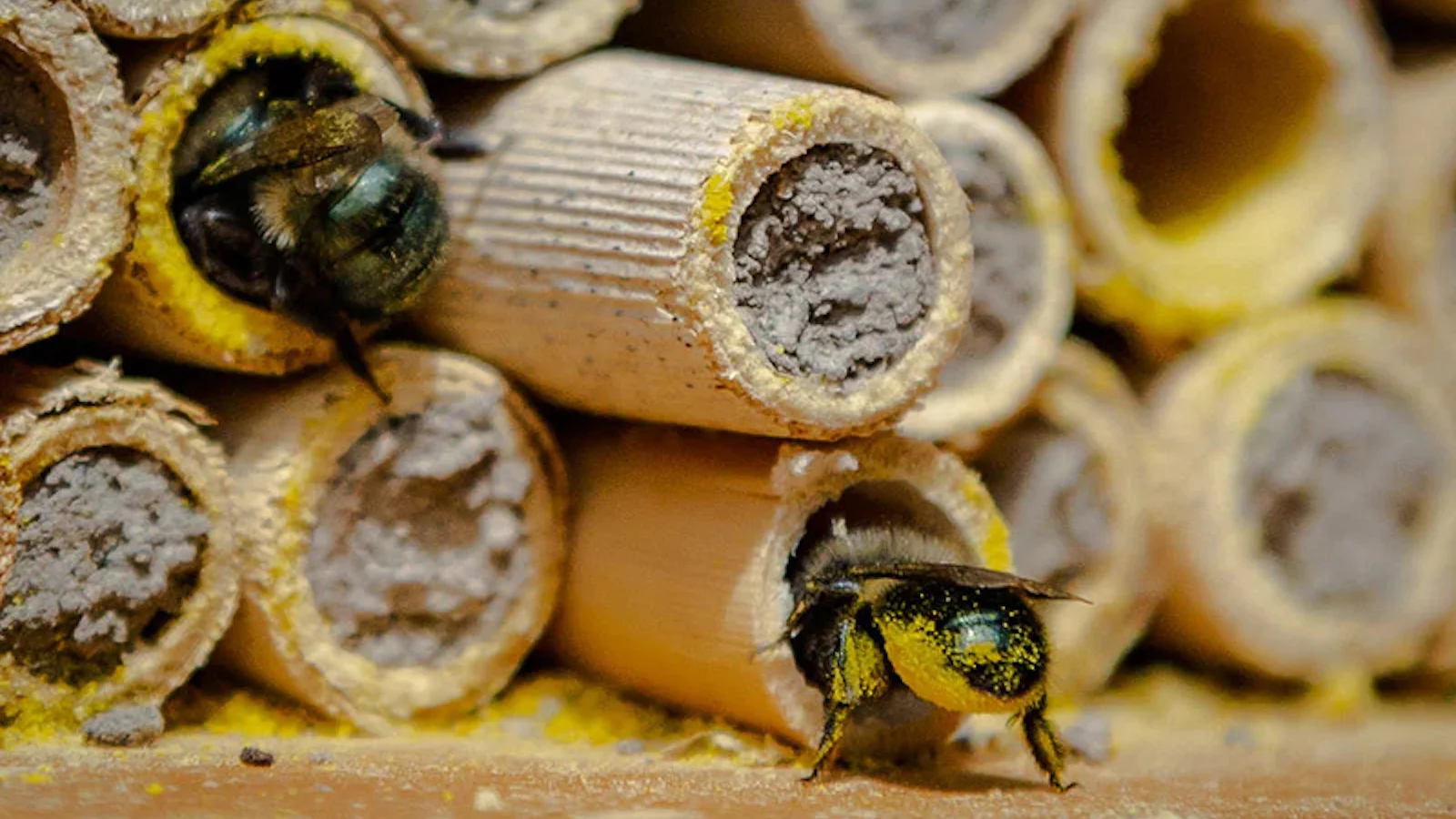Dave Hunter is a self-proclaimed “why guy.” Thirty years ago, it was this persistent desire to know how things work that caused him to look from his friend’s apple tree to his own, and question why the other tree had an exponentially higher yield of fruit.
As the two talked, Hunter learned that the secret to success had been the Blue Orchard Mason Bee. Mason bees are native to most of North America, solitary, and nest in cavities, as opposed to hives. They are also powerful pollinators. This new information sparked a strong interest in Hunter.
Drawn to the idea of increasing his crop yields with minimal effort, he introduced the tiny but mighty bee into his own yard. He also began researching his newfound garden ally. The trouble was, there was very little information out there.
Regardless of the challenges of mostly forging his own path, he nurtured his interest along for more than a decade. It wasn’t until 2008, in the wake of a recession driven layoff, that Hunter decided to take his hobby to the next level and founded his company, Crown Bees.
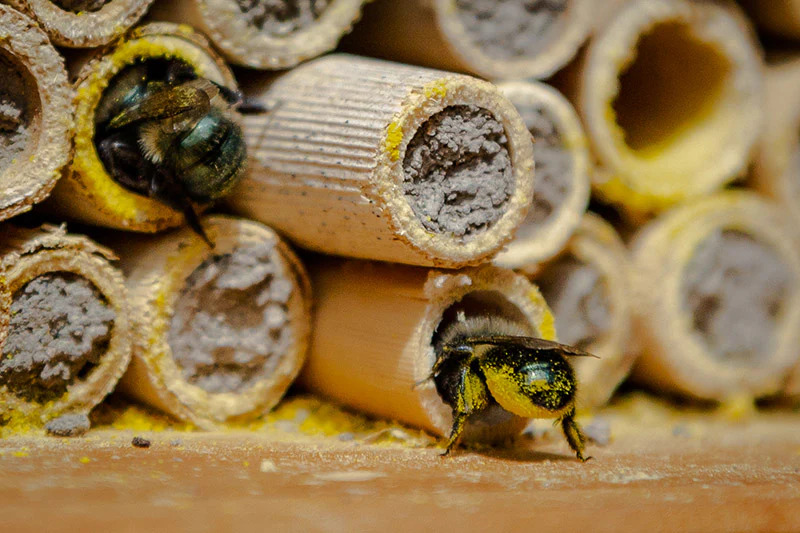
Mason bees crawling into individual cavities, surrounded by mud-sealed chambers. (Photo courtesy of Crown Bees)
Differences Between Bees
At the outset of his foray into the bee world, Hunter was often frustrated by the lack of information out there. In the beginning, he could find only two researchers who were actively studying and writing on native bees. Even three decades later data is sparse, in comparison with the honey bee—which is the most widely used and managed bee in the world.
Of the 4,000 species of bee that are native to North America, only one is managed: the Blue Orchard Bee.
This is primarily due to funding. The lion’s share goes to the honey bee, which is a non-native species that was brought to the U.S. by English settlers.
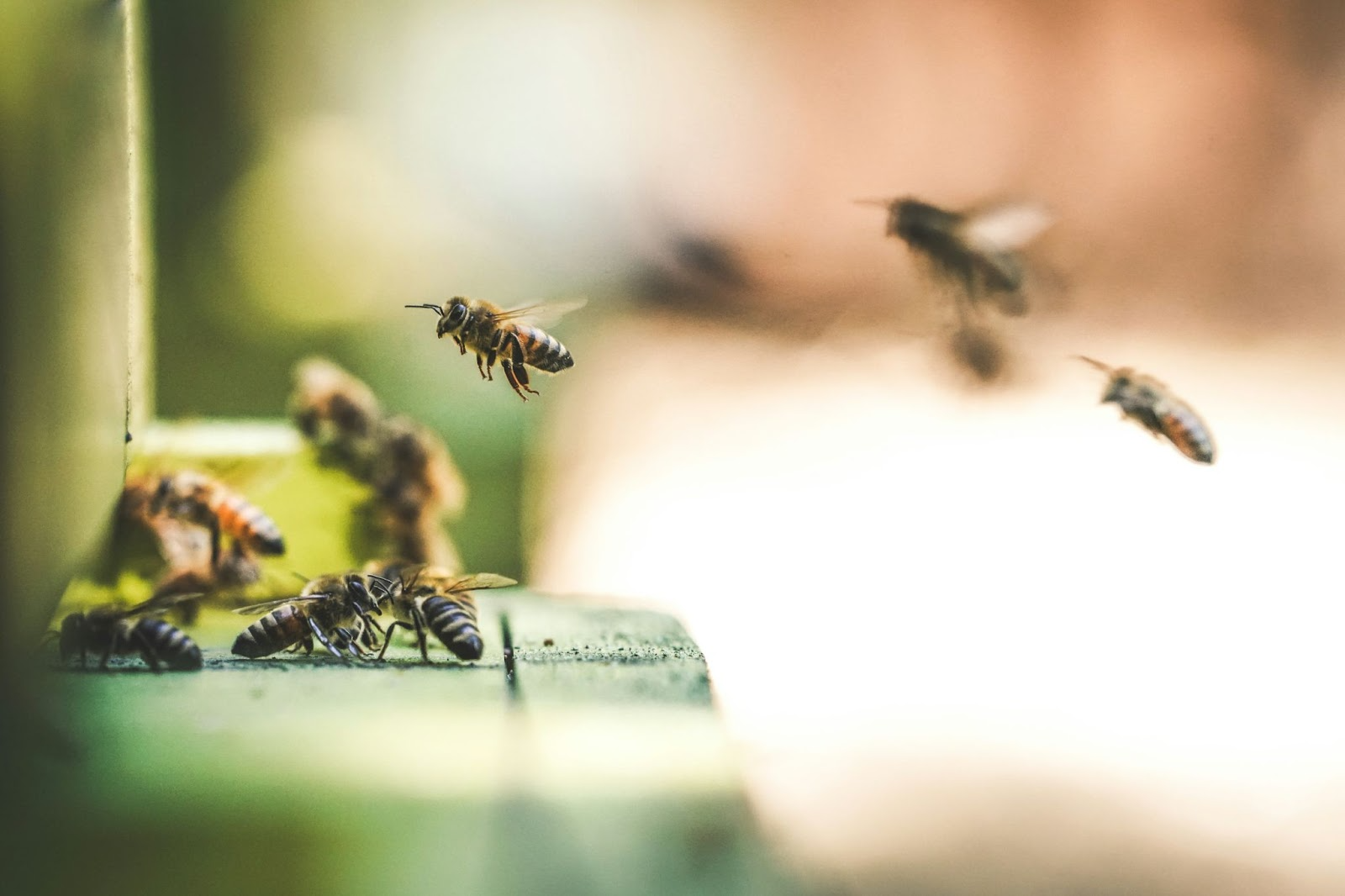
Honey bees returning to their hive. (Photo: Eric Ward | Unsplash)
Today, honey bees are a powerful force in modern agriculture—in a way that has imbalanced the scale as never before. In addition to being prized for their commodities of honey, wax and propolis, honey bees are driven by their hive mentality.
This means, that regardless of the chemicals that are prevalent in modern conventional agriculture, honey bees will not leave a given area regardless of the harm it may cause them due to their instinct to always return to the hive. Conversely, solitary bees lack a hive-mind, making them more of a self-preservationist.
In discussing the proclivity of the honey bee, Hunter said, “Because it’s chained to the hive, it can fly through toxic stew. And while it might impact it, the farmer is able to spray -cides everywhere and the bees have to fly through that. Whereas if you ask my bee to fly through that, it doesn't—it just flies away.”
“My bee is useless in a conventional farm. The honey bee allows monoculture and chemicals to occur, which impacts then, your native species out there.”
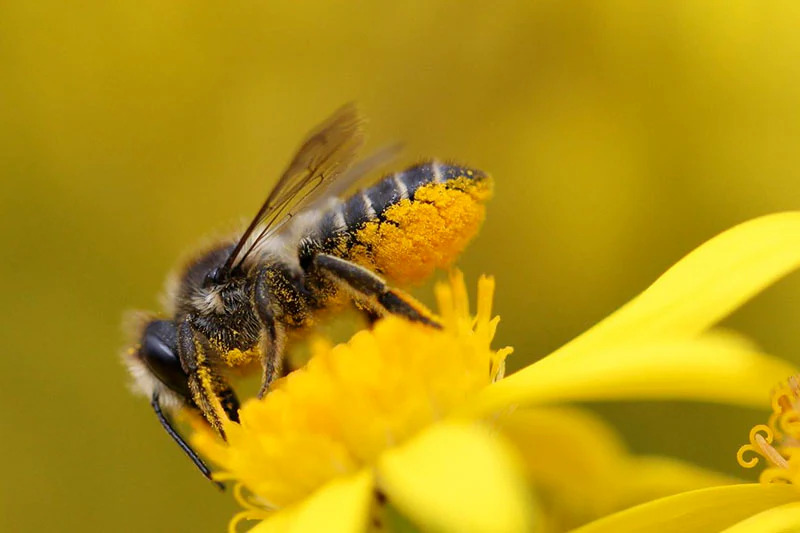
Leaf cutter bee with pollen covered abdomen. (Photo courtesy of Crown Bees)
In addition to their hive mind, the concentrated population of honey bees within a hive allows them to outcompete solitary bees in pollen foraging—especially as beekeeping has become commercialized.
“The honey bee allows the native bees to have a tough time,” Hunter said.
“When you put hives [everywhere], because everyone's trying to save the bee, what winds up happening is most all of the pollen is stripped, because there's not enough pollen for even the hives. And so, it’s tough for natives to handle themselves underneath that onslaught. It's very damaging to the ecology.”
In regard to who is the more powerful pollinator, the waters get murky. Honey bees have evolved to bring the majority of the pollen they forage back to their hive. Whereas native bees are known to cover themselves with pollen and actually transfer the majority of it to the next blossom they visit, actually pollinating much more effectively.
“One is a pollen spreader and one is a pollen taker,” Hunter explained.
“There are some inadvertent grains that are missed and fall off. So sheer numbers get the crop pollinated, but I can have my 400 females and your 30,000 females, and they will double the yield of your crop because of how they're spreading the pollen.”
This stiff competition for food is concerning, as the population of many species of native, wild bees are already in decline.
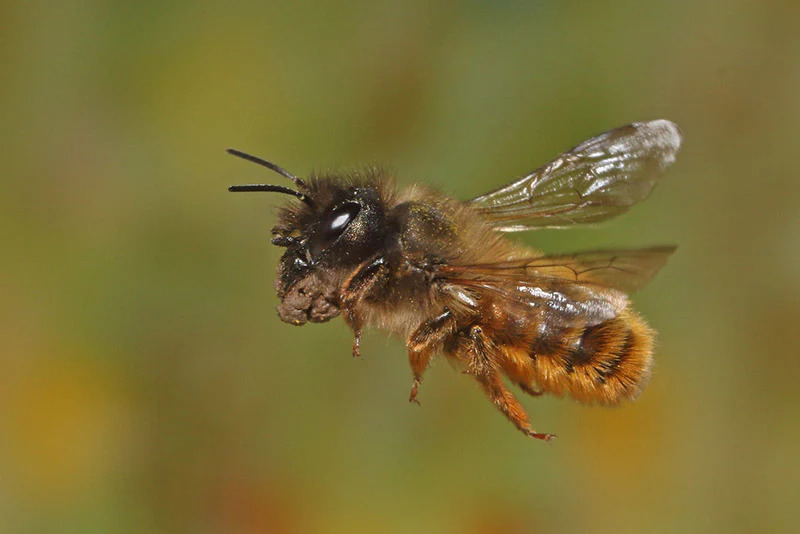
Mason bee flying with mud that it uses to build nesting chambers (Photo courtesy of Crown Bees)
The Crown Community
Despite being a company that sells and supports solitary bees, Crown Bees is built on community. In solidarity with the knowledge sharing that was integral to the founder’s own introduction to the world of native bees, Crown has extensive educational resources on their website to support the bee raising community.
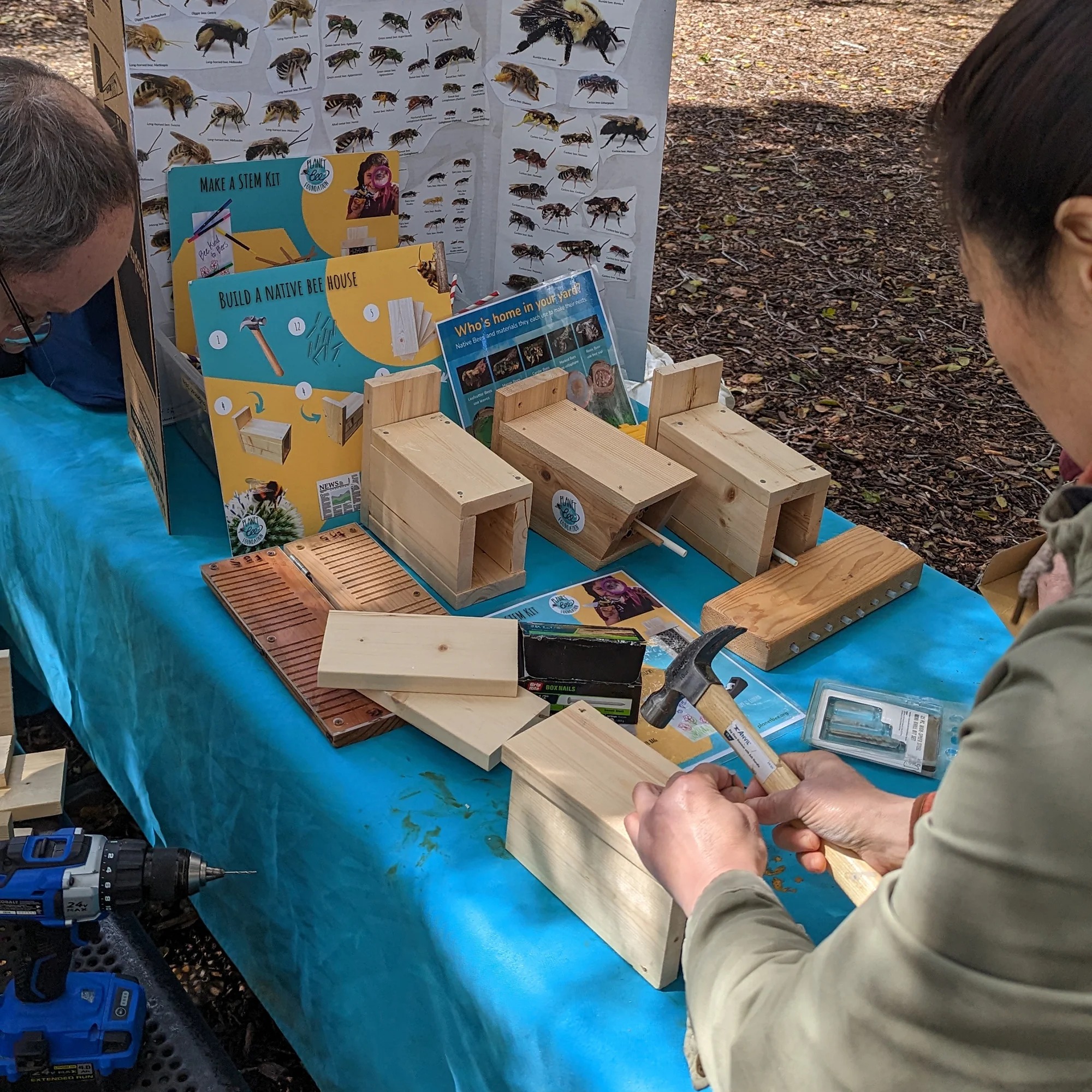
The Crown Bees Build-A-Bee House kit allows users to build a native bee house while learning about local pollinator populations. (Photo: Crown Bees Facebook)
In return, this community has supported them. One unique facet of the Crown Bees business model is their bee buy back program. In order to provide bees that are appropriately adapted to the diverse ecoregions found throughout the U.S. and Canada, Crown Bees invites members of their community to send in their extra cocoons in the fall.
From here, the folks at Crown Bees inspect and clean the cocoons, label them with their location of origin, and store them until the following Spring. When new customers order bees, they are then able to supply them with bees that are properly adapted to their area—ultimately setting new native bee allies up for success.
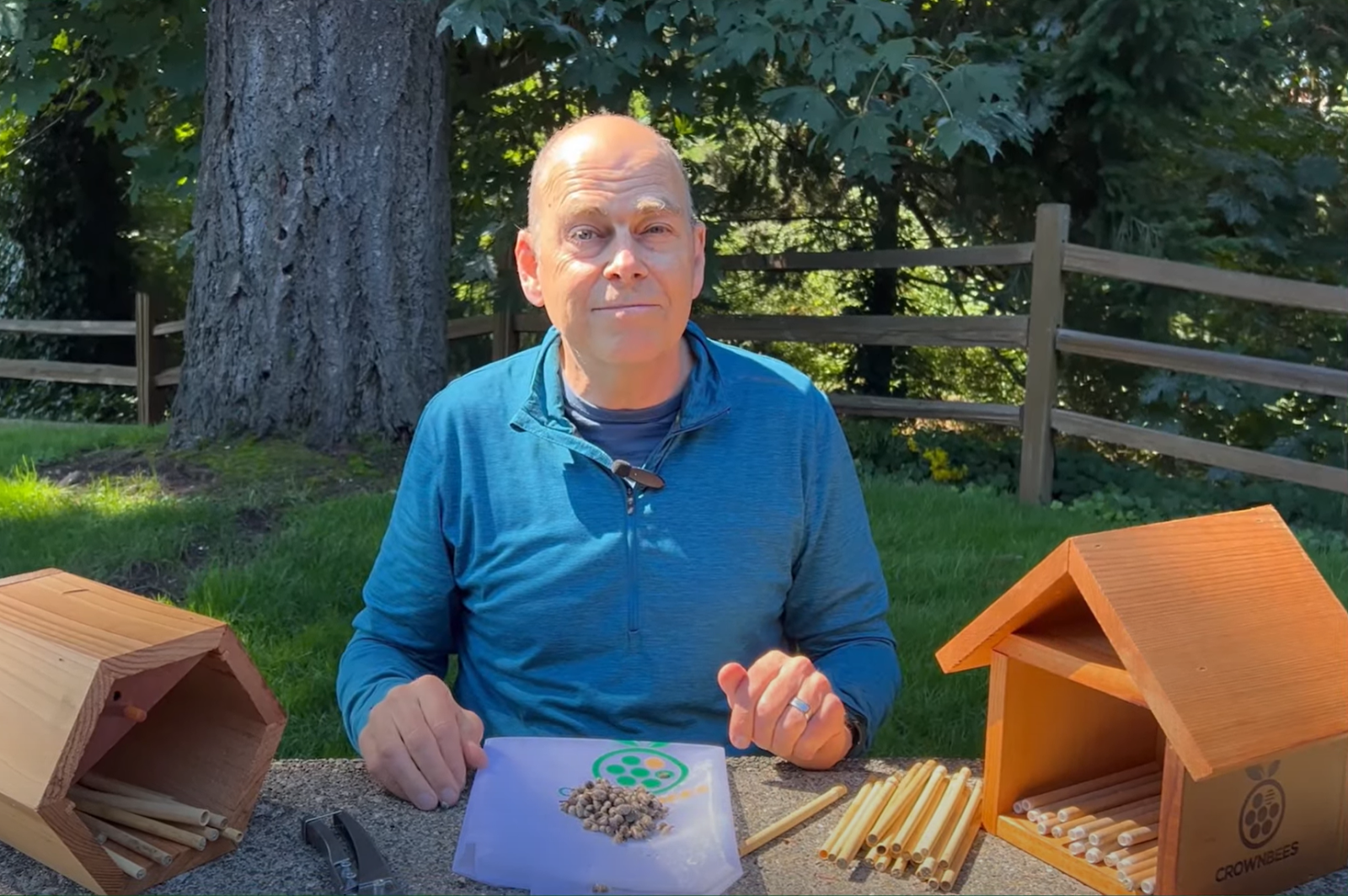
Founder Dave Hunter explaining the Bee Buy Back program. (Photo courtesy of Crown Bees)
They also pride themselves on the partnerships they’ve built over the years. These partnerships have been forged with researchers from universities to the USDA, community groups, nonprofits, advocacy organizations and retailers.
According to the Crown Bees website, all pollinator populations—bees, butterflies, bats, and birds—are vital to food production and ecosystem services worldwide, and in order to build strong, educated communities of beekeepers the organization relies heavily on these collaborative efforts.
“Our pollinator populations, whether bees, butterflies, bats, or birds, are critical for global food production and ecosystem services," Crown Bees says on its website. "As we at Crown Bees work to create vibrant bee-raiser communities, collaboration is essential for success.”
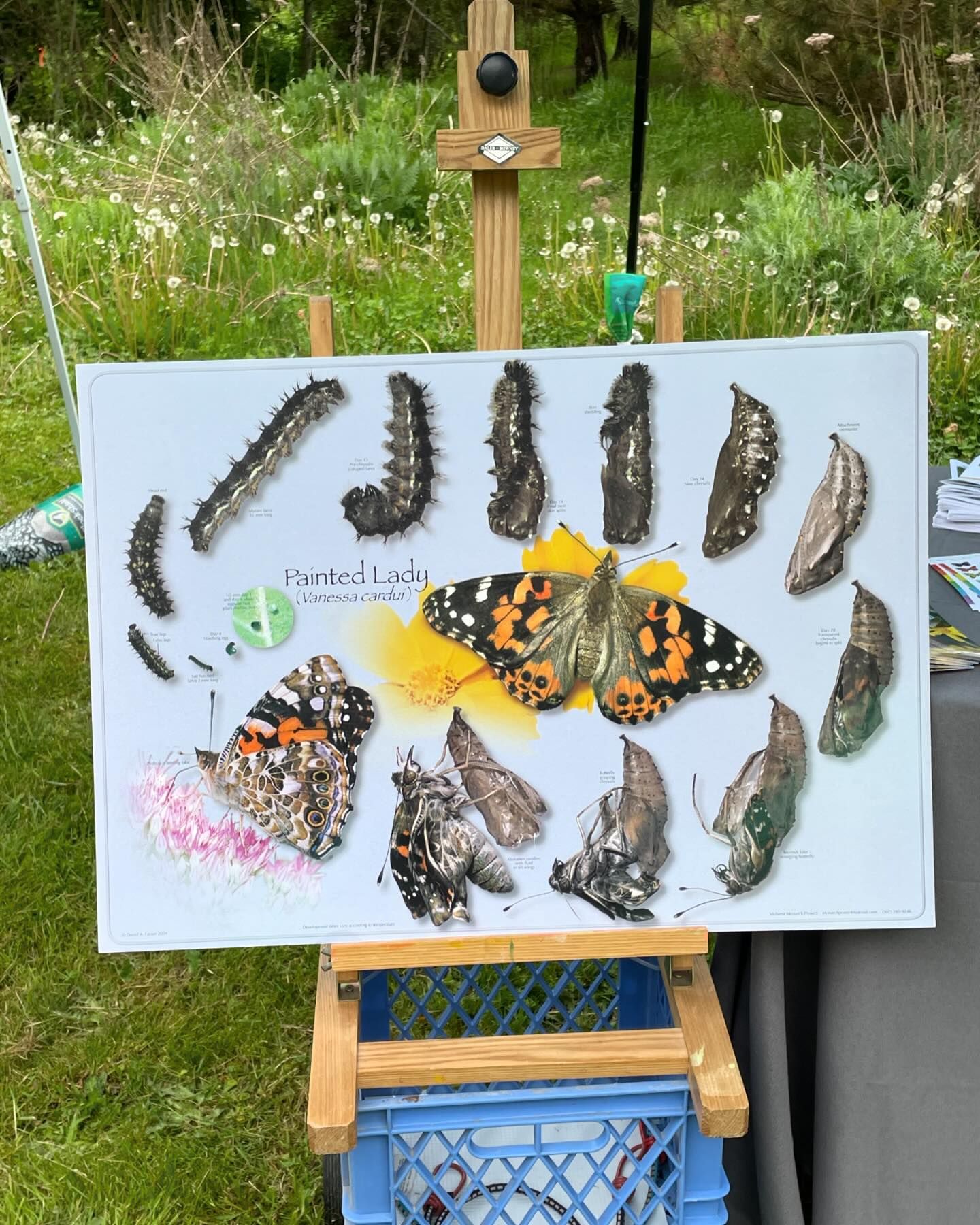
Painted lady display at the 21 Acres Pollinator Fest attended by Crown Bees earlier this year. (Photo: Crown Bees Facebook)
It is this spirit of community and collaboration that ultimately led Hunter to found the Professional Orchard Bee Association—a collaborative, knowledge-sharing group of researchers and farmers.
“It's about progressing research and passing that knowledge to the practitioners … the piece that's now starting to grow is helping the growers, the farmers, learn how to manage the bee,” Hunter said of the group.
This interest in food production is of central interest to Crown Bees. While the Professional Orchard Bee Association supports large-scale growers, Crown Bees supports home growers and community gardeners.

The Crown Bees Community Garden program expands access to fresh fruits and vegetables using community and school gardens. (Photo: Crown Bees Facebook)
“When you allow bees in your yard, your flowers are more prolific, you have more beans, you have more strawberries—there's more food production,” Hunter said.
All of these efforts have grown out of Hunter’s desire to both create an industry where one previously didn’t exist, and to battle his biggest competitor.
“My biggest competitor is ignorance,” he said. “And raw education is the path against ignorance.”
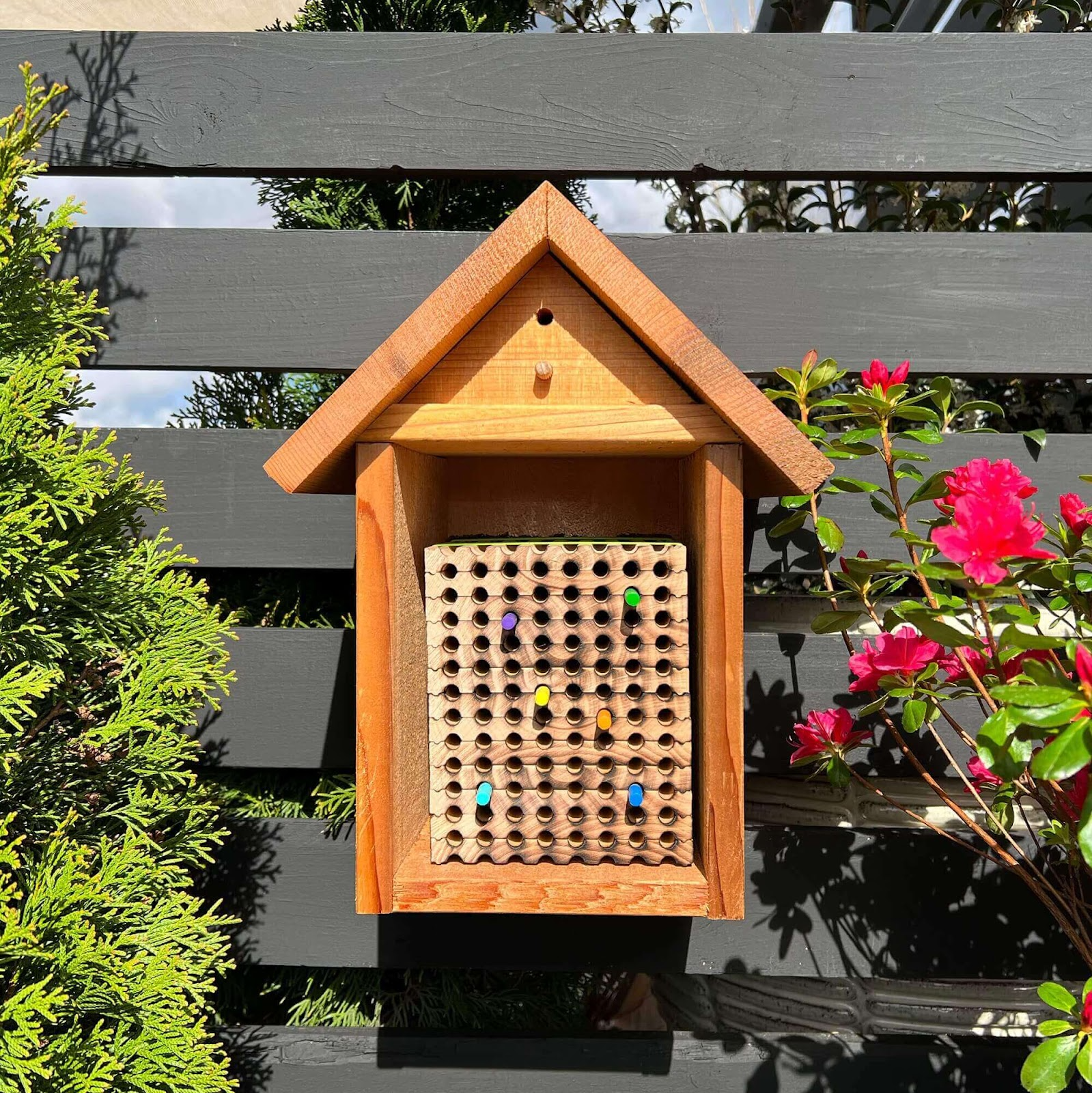
The Tower: A cavity-nesting bee house from Crown Bees. (Photo courtesy of Crown Bees)
